Top speed 950 km/h Wingspan 35 m First flight June 17, 1955 | Length 40 m Introduced 1956 Manufacturer Tupolev | |
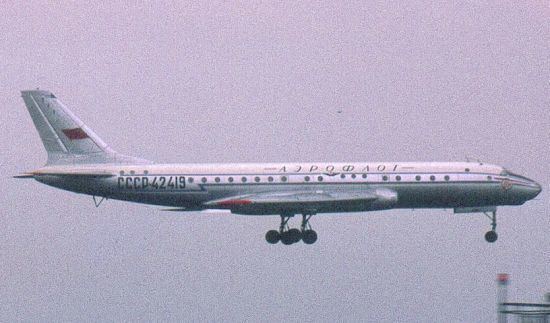 | ||
Tupolev tu 104 nato code camel
The Tupolev Tu-104 (NATO reporting name: Camel) was a twin-engined medium-range narrow-body turbojet-powered Soviet airliner and the world's first successful jet airliner. Although it was the sixth jet airliner to fly (following, in order, the British Vickers Type 618 Nene-Viking, de Havilland Comet , Canadian Avro Canada C102 jetliner, US Boeing 367-80 and French Sud Caravelle), the Tu-104 was the second to enter regular service (with Aeroflot) and the first to provide a sustained and successful service (the Comet which had entered service in 1952, was withdrawn from 1954-1958 following a series of crashes due to structural failure). The Tu-104 was the sole jetliner operating in the world between 1956 and 1958.
Contents
- Tupolev tu 104 nato code camel
- Design and development
- Operational history
- Variants
- Former operators
- Accidents and incidents
- Specifications Tu 104B
- References
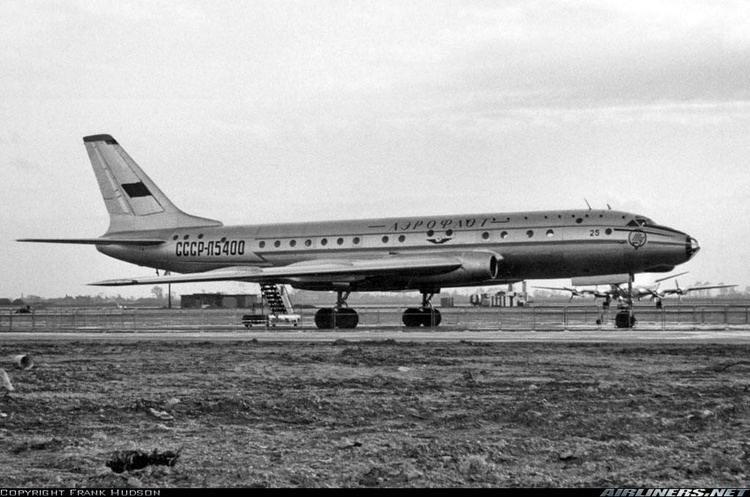
In 1957, Czechoslovak Airlines – ČSA, (now Czech Airlines) became the first airline in the world to fly a route exclusively with jet airliners, using the Tu-104A variant between Prague and Moscow. In civil service, the Tu-104 carried over 90 million passengers with Aeroflot (then the world's largest airline), and a lesser number with ČSA, while it also saw operation with the Soviet Air Force. Its successors included the Tu-124 (one of the first turbofan-powered airliners), the Tu-134 and the Tu-154.
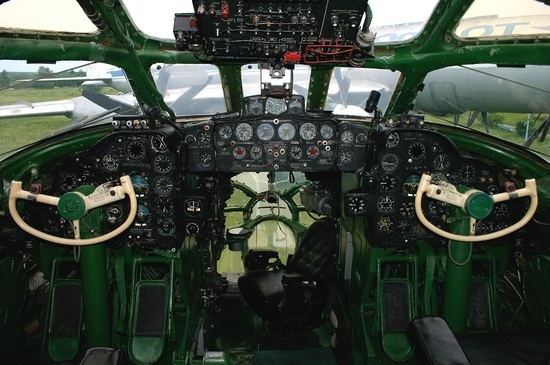
Design and development
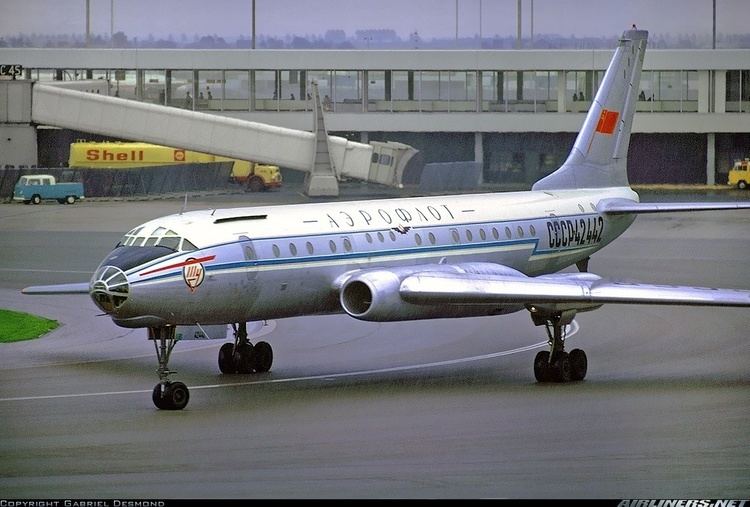
At the beginning of the 1950s, the Soviet Union's Aeroflot airline needed a modern airliner with better capacity and performance than the piston-engined aircraft then in operation. The design request was filled by the Tupolev OKB, which based their new airliner on its Tu-16 'Badger' strategic bomber. The wings, engines, and tail surfaces of the Tu-16 were retained with the airliner, but the new design adopted a wider, pressurised fuselage designed to accommodate 50 passengers. The prototype build in MMZ 'Opit' first flew on June 17, 1955 with Yu.L. Alasheyev at the control. It was fitted with a drag parachute to shorten the landing distance by up to 400 metres (1,300 ft), since at the time not many airports had sufficiently long runways.
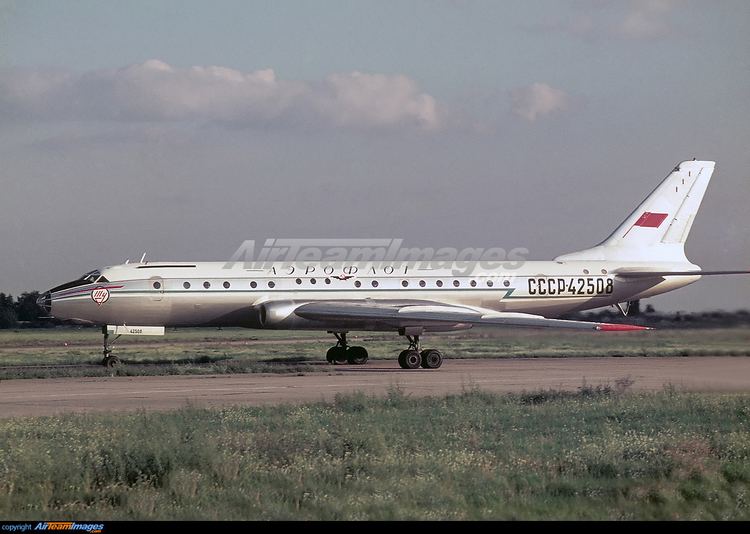
Although a popular story says Westerners were surprised by the arrival of the Tu-104 in London during a 1956 state visit by Nikolai Bulganin and Nikita Khrushchev, the airplane had already been revealed at the July 1955 Tushino airshow. In either case, Western observers at the time thought the Soviets lacked the advanced technology required to build an airliner suitable for commercial performance. By the time production ceased in 1960, about 200 had been built.
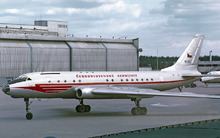
The Tu-104 was powered by two Mikulin AM-3 turbojets placed at the wing roots (remotely resembling the solution used on the de Havilland Comet). The crew consisted of five people: two pilots, a navigator (placed in the glazed "bomber" nose), a flight engineer and a radio operator (the radio operator was later eliminated). The airplane raised great curiosity by its lavish "Victorian" interior – called so by some Western-hemisphere observers – due to the materials used: mahogany, copper and lace.
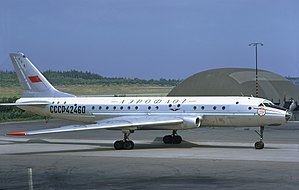
Tu-104 pilots were trained on the Il-28 bomber, followed by mail flights on an unarmed Tu-16 bomber painted in Aeroflot colors, between Moscow and Sverdlovsk. Pilots with previous Tu-16 experience transitioned into the Tu-104 with relative ease. The Tu-104 was considered difficult to fly, as it was heavy on controls and quite fast on final approach, and at low speeds it would display a tendency to stall, a feature common with highly-swept wings. Experience with the Tu-104 led the Tupolev Design Bureau to develop the world's first turbofan series-built airliner, the Tupolev Tu-124, designed for local markets, and subsequently the more commercially successful Tu-134
Operational history
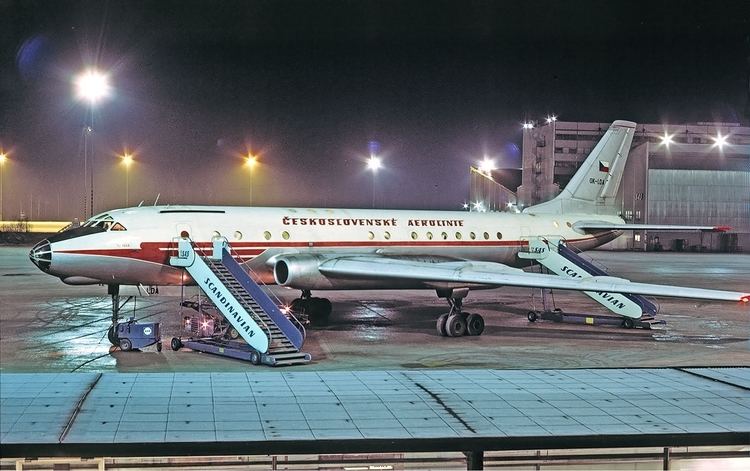
On September 15, 1956, the Tu-104 began revenue service on Aeroflot's Moscow-Omsk-Irkutsk route, replacing the piston-engined Ilyushin Il-14. The flight time was reduced from 13 hours and 50 minutes to 7 hours and 40 minutes, and the new jet dramatically increased the level of passenger comfort. By 1957, Aeroflot had placed the Tu-104 in service on routes from Vnukovo Airport in Moscow to London, Budapest, Copenhagen, Beijing, Brussels, Ottawa, Delhi, and Prague.
In 1957, ČSA Czechoslovak Airlines became the only export customer for the Tu-104, placing the aircraft on routes to Moscow, Paris and Brussels. ČSA bought six Tu-104As (four new and two used examples) configured for 81 passengers. Three of these aircraft were subsequently written off (one due to a refuelling incident in India and another to a pilot error without fatalities).
In 1959, the plane was leased to Sir Henry Lunn Ltd. (Lunn Poly) of London which used the plane for 12 holidays to Russia and boasted a 4.5 hours flight time.
The Tu-104 continued to be used by Aeroflot throughout the 1960s and 1970s. Some 16 aircraft were lost in crashes (some due to hijackings/bombings). The safety record was comparable to other early jet airliners of its day, but was poor compared to more modern airliners. Aeroflot retired the Tu-104 from civil service in March 1979 following a fatal accident at Moscow. Following this, several aircraft were transferred to the Soviet military, which used them as staff transports and to train cosmonauts in zero gravity. However, after a Tu-104 crash in February 1981 killed 52 people (17 of whom were senior army and naval staff), the type was permanently removed from service. The last flight of the Tu-104 was a ferry flight to Ulyanovsk Aircraft Museum in 1986.
Variants
Data from:
Former operators
Accidents and incidents
According to the American Flight Safety Foundation, between 1958 and 1981, 16 Tu-104s were lost in crashes out of 37 aircraft written off (hull loss rate = 18%).
Specifications (Tu-104B)
Data from Gordon and Rigmant
General characteristics
Performance
